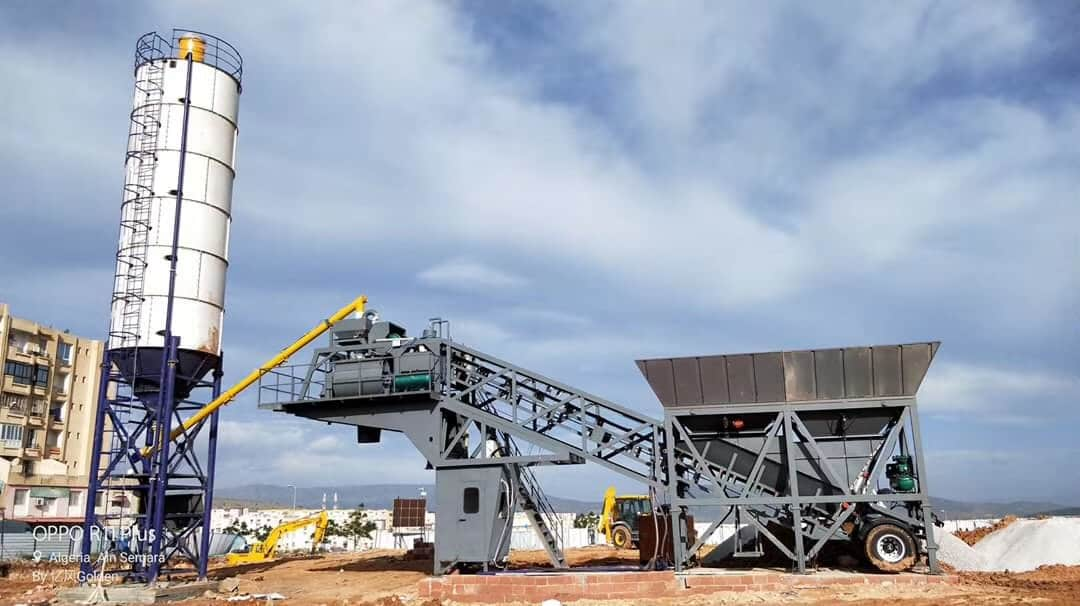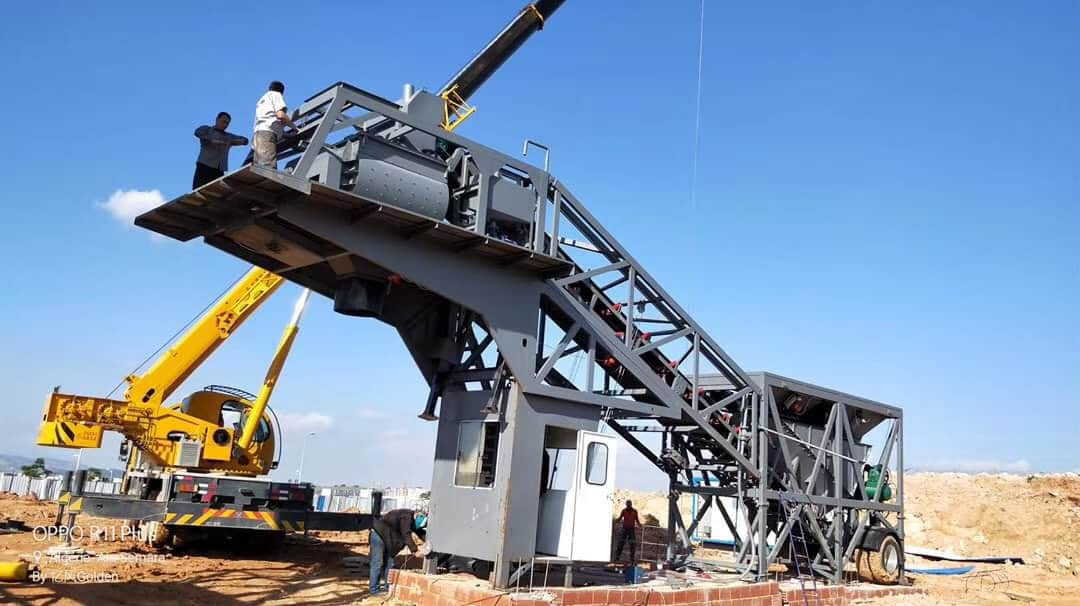Mobile concrete batching plants are versatile workhorses in construction, enabling on-site concrete production with flexibility and efficiency. Whether you’re a site manager, engineer, or equipment operator, mastering their operation ensures timely project delivery and high-quality output. Below is a detailed, safety-focused guide to operating these machines effectively.
How to Operate a Mobile Concrete Batching Plant?
Last Updated: 2025-08-22
1. Pre-Operation Preparation
Before starting, conduct thorough checks to avoid delays or accidents:
- Site Assessment: Ensure the plant is positioned on a flat, stable surface (avoid soft soil or slopes >5°). Clear debris and confirm adequate space for material storage (aggregates, cement, water) and discharge.
- Equipment Inspection: Verify all components — including the mixing drum, conveyor belts, control panel, and weighing systems — are damage-free. Check hydraulic hoses, electrical connections, and safety guards (e.g., emergency stop buttons).
- Utility Setup: Connect to power sources (generator or grid) and water supply. Confirm fuel levels for diesel-powered models.

2. Startup & System Initialization
- Power On: Activate the main control panel. Allow the system to boot up, initializing sensors (load cells, temperature monitors) and calibrating weighing mechanisms.
- Conveyor & Feeder Alignment: Start conveyor belts for aggregates (sand, gravel) and ensure feeders are unclogged. Adjust belt speeds to match batch requirements.
- Cement Silo Check: If using bulk cement, inspect silos for moisture or blockages. Open valves to allow cement flow into the mixing system.
3. Material Loading & Batching
Precision in material measurement is critical for consistent concrete quality:
- Aggregate Dosing: Use the control panel to input batch sizes (e.g., 300kg sand, 400kg gravel). The system will automatically open gates to load aggregates into the mixing drum.
- Cement & Additives: For cement, set the target weight (e.g., 150kg per batch) and monitor the silo feeder. Add chemical admixtures (e.g., plasticizers, retarders) via manual or automated pumps, following manufacturer guidelines.
- Water Measurement: Use a flow meter or volumetric tank to add clean water (typically 150–200L per cubic meter of concrete). Adjust based on aggregate moisture content (wet sand may reduce water needs).
4. Mixing Process
- Drum Activation: Start the mixing drum at low speed (3–5 RPM) to prevent material splashing. Allow 2–3 minutes for dry mixing (aggregates + cement) to ensure uniform distribution.
- Water Integration: Once dry materials are mixed, introduce water gradually. Increase drum speed to 10–12 RPM for wet mixing, ensuring all components blend thoroughly (3–5 minutes total).
- Quality Check: Sample the concrete periodically to test slump, air content, and strength. Adjust water/cement ratios or additive doses if deviations occur.

5. Discharging & Cleanup
- Controlled Discharge: Tilt the mixing drum (if tilting model) or open the discharge gate to release concrete into trucks or molds. Avoid overfilling to prevent spillage.
- Post-Discharge Flush: Rinse the drum, conveyors, and mixing tools with water to prevent cement hardening. Use a scraper or brush to remove residual material from corners.
- Waste Management: Collect excess concrete (if any) for recycling or proper disposal per local regulations.
6. Safety & Maintenance Best Practices
- Personal Protective Equipment (PPE): Always wear helmets, gloves, goggles, and steel-toe boots. Avoid loose clothing near moving parts
- Lockout/Tagout (LOTO): Before maintenance, isolate power sources and tag controls to prevent accidental startup.
- Routine Maintenance: Lubricate moving parts (bearings, gears) weekly. Inspect belts for wear and replace damaged hoses. Clean air filters monthly to maintain engine efficiency.
By following these steps, operators can maximize productivity, extend equipment lifespan, and deliver high-quality concrete on-site. Mastering mobile batching plant operation is key to thriving in dynamic construction environments.
TAG: Mobile concrete batching plant
